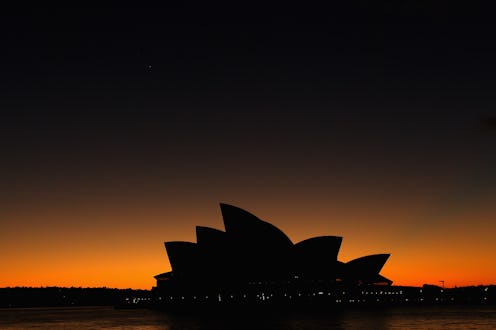News
How You Can Watch Five Planets Align
Mercury, Venus, Mars, Saturn, and Jupiter will all be making a dazzling appearance in the night sky on Wednesday. For the first time in a decade, the planets will appear as if completely aligned. They will be viewable to the naked eye and on display for a full month, from Jan. 20 to Feb. 20. How you can watch the five planets is simply a matter of timing, which will determine just how visible they will be. All five planets will be visible across the globe from every place but the North Pole. The best chance to catch them is shortly before dawn, about an hour to 45 minutes before sunrise.
If you're on the Northern Hemisphere of Earth, simply look east and locate the two brightest of the five planets — Venus and Jupiter. Fred Watson of the Australian Astronomical Observatory spoke with The Guardian about this unique event and offers these tips for planet-watching. Watson said:
Saturn is between Mars and Venus, so it's lower down. It's the one you're most likely to confuse with stars because it's not as bright as Jupiter. But it's yellowish. And with binoculars with about 10 times magnification you can tell it's not a round dot of light like a star — it looks elongated.
Besides the brightness of Venus and Jupiter, the particularly helpful markers useful to locating the planets include the stars Antares and Spica. The Daily Mail suggests downloading stargazing apps like Exoplanet and SkEye for added assistance. Can't get away from excessive light pollution or battling cloudy skies? Slooh offers telescope streams that should be able to provide a better view of the five planets, including visible rings from Saturn.
The best days to watch the five planets are toward the end of January and heading into the first week of February. This is when Mercury will appear to be in one of its highest spots in the night sky. The planets appear as if they were aligned due to their relative positions in their own orbit. Such an event hasn't been seen since January 2005. Those who miss the five planets in January and February need only wait until August to catch the same type of alignment for about a week starting on the 13th, though the display will be slightly less vibrant. After that, the planets won't align again until 2040.
